Canon RF Lenses: Top Recommendations for Every Photographer
If you use a Canon mirrorless camera, getting to know RF mount lenses is the first step to taking your photography to the next level.
In this guide, we'll walk you through some key things to know about Canon RF mount lenses and share tips on choosing the right lens for different types of photography.
Not sure about Canon camera models or lenses? Click the link below to check out our detailed articles on those topics.
Further Reading:

In this article, you will learn:
- A Quick Guide to Canon Lens Mounts
- Recommended RF Lenses for APS-C Mirrorless Cameras
- Recommended RF Lenses for Full-Frame Mirrorless Cameras
- Conclusion
A Quick Guide to Canon Lens Mounts
Canon camera systems feature three main lens mounts: EF, EF-M, and RF.
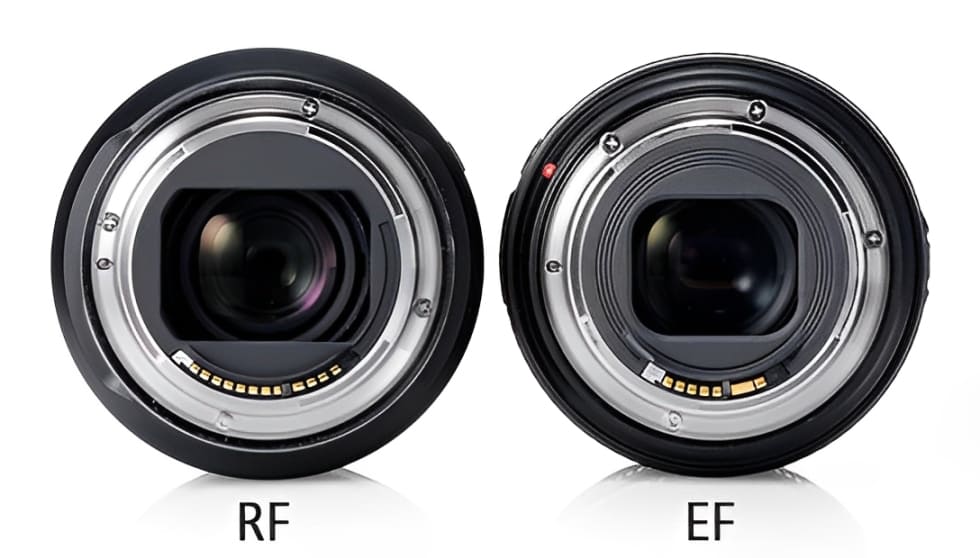
The EF mount, introduced in 1987, was designed for Canon EOS DSLR cameras and is one of the most recognized DSLR mounts in the world. If you own a Canon DSLR, it likely uses EF-mount lenses.
An important note:
Lenses labeled EF-S are designed for Canon APS-C DSLR cameras but still use the EF mount. There's no separate "EF-S mount," so don't let the naming confuse you.
The EF-M mount, launched in 2012, was Canon's first mirrorless lens mount and is compatible with Canon's M-series mirrorless cameras. If your Canon mirrorless camera starts with the letter "M" (like M6, M50, or M200), you'll need EF-M lenses.
The RF mount, introduced in 2018, is Canon's latest and most advanced lens mount, made for the R-series mirrorless cameras. If your Canon mirrorless camera starts with the letter "R" (like R5, R6, R10, or R100), it uses RF-mount lenses.
Understanding lens mounts is crucial — mixing them up could leave you wondering why a Canon lens won't fit a Canon camera!
Since Canon has discontinued further development of DSLRs and M-series mirrorless cameras, this guide focuses on the RF mount, which represents Canon's current and future mirrorless lineup.

Canon lenses are categorized into RF and RF-S lenses.
- RF-S isn't a new mount. It's just a prefix that indicates the lens is designed specifically for APS-C mirrorless cameras (not recommended for full-frame cameras).
- RF lenses, on the other hand, are compatible with both full-frame and APS-C mirrorless cameras.
All Canon lenses are autofocus. In the past, Canon didn't license or open the RF mount to third parties, so if you wanted an autofocus RF lens, Canon was your only option.
However, some third-party brands attempted to make RF autofocus lenses. For example, Samyang released two RF prime lenses with autofocus, but after negotiations with Canon, they are now sold under the Rokinon name. Yongnuo also launched an RF 85mm autofocus lens, but it's no longer available on official platforms.
However, to regain market share in the mirrorless camera space, Canon has recently made strategic changes. Canon now licenses its RF mount to third-party manufacturers — but only for APS-C lenses.
For instance, Sigma released several APS-C RF-mount lenses in April 2024 under a licensing agreement with Canon.
That said, Canon has not yet licensed the RF mount for full-frame lenses, so third-party manufacturers can currently only produce APS-C RF-mount lenses.
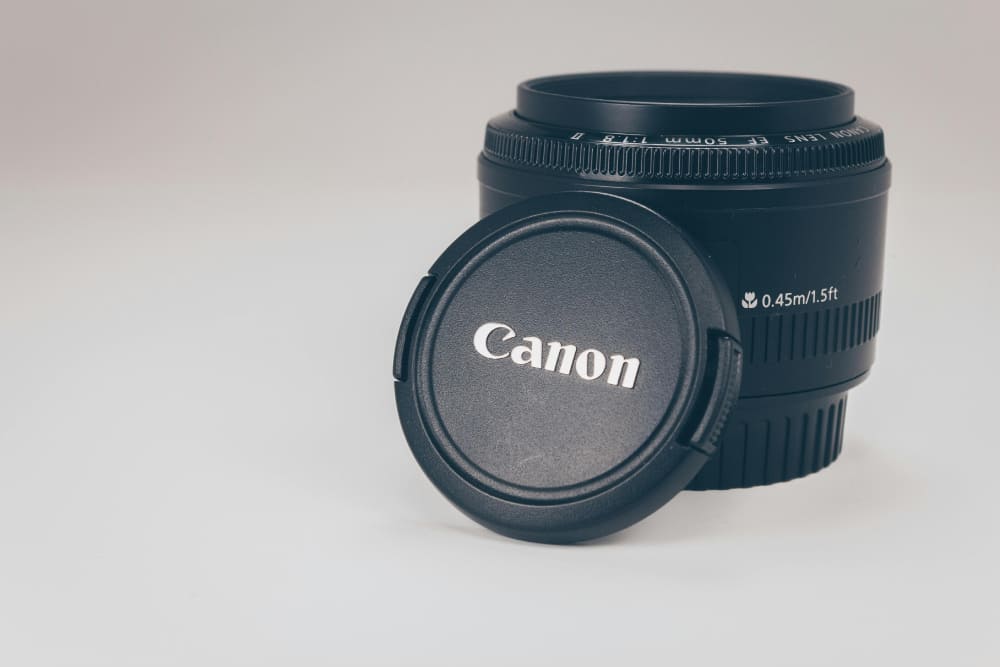
If you want to identify Canon's premium lenses, just look for a red ring around the front of the lens.
Lenses with this red ring are Canon's high-end models, and their names include the letter "L", which stands for "Luxury." This tradition has carried over from the EF-mount lens design.
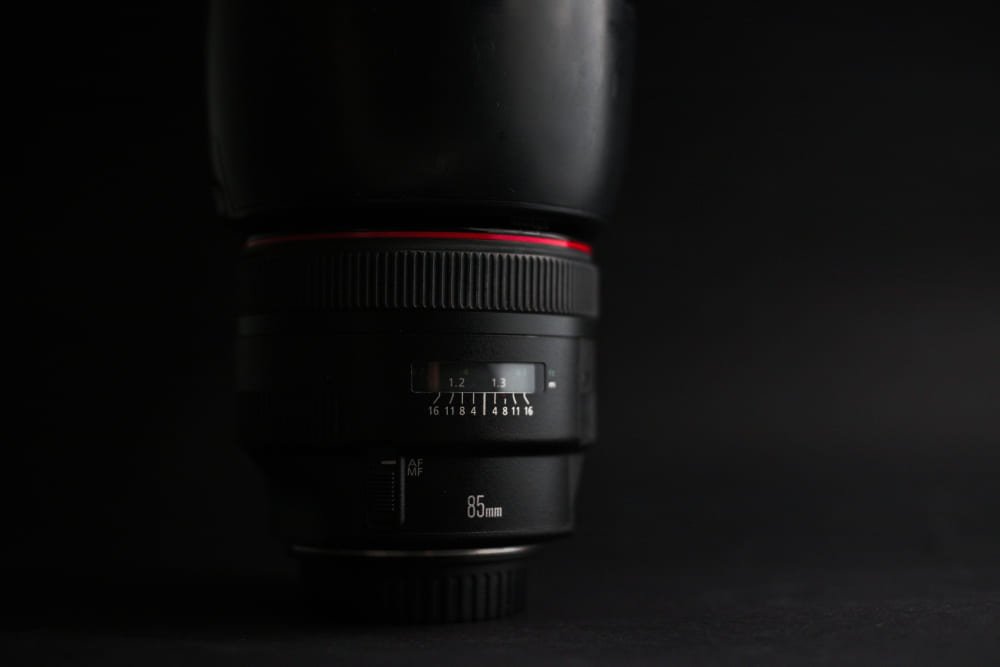
Recommended RF Lenses for APS-C Mirrorless Cameras
Canon's R-series APS-C mirrorless cameras include the R100, R50, R10, and R7. These cameras are compatible with both RF and RF-S lenses.
It's worth noting that the focal length printed on APS-C lenses is the actual focal length, not the full-frame equivalent. To calculate the full-frame equivalent, you need to multiply by a crop factor, which is typically 1.6 for Canon APS-C cameras.
1. Everyday Use and Travel
- Canon RF-S 18-45mm F4.5-6.3 IS STM
This is Canon's most affordable RF zoom lens. It's compact, lightweight, and offers decent image quality. With a full-frame equivalent focal range of 29-72mm, it's great for capturing daily life.
This lens is not sold separately and is only available in basic kits bundled with APS-C mirrorless cameras. It's ideal for users on a tight budget or those who prioritize portability.
- Canon RF-S 18-150mm F3.5-6.3 IS STM
This is a versatile RF lens with a zoom ratio of 8.3x and an equivalent focal range of 29-240mm, making it perfect for travel.
Compared to the 18-45mm lens, this one offers better telephoto capabilities, a larger maximum aperture, and superior image stabilization, though it's heavier, bulkier, and more expensive.
We recommend this lens for users with a larger budget who frequently travel.
Below is a size comparison of the Canon R10 with the RF-S 18-45mm and RF-S 18-150mm lenses.
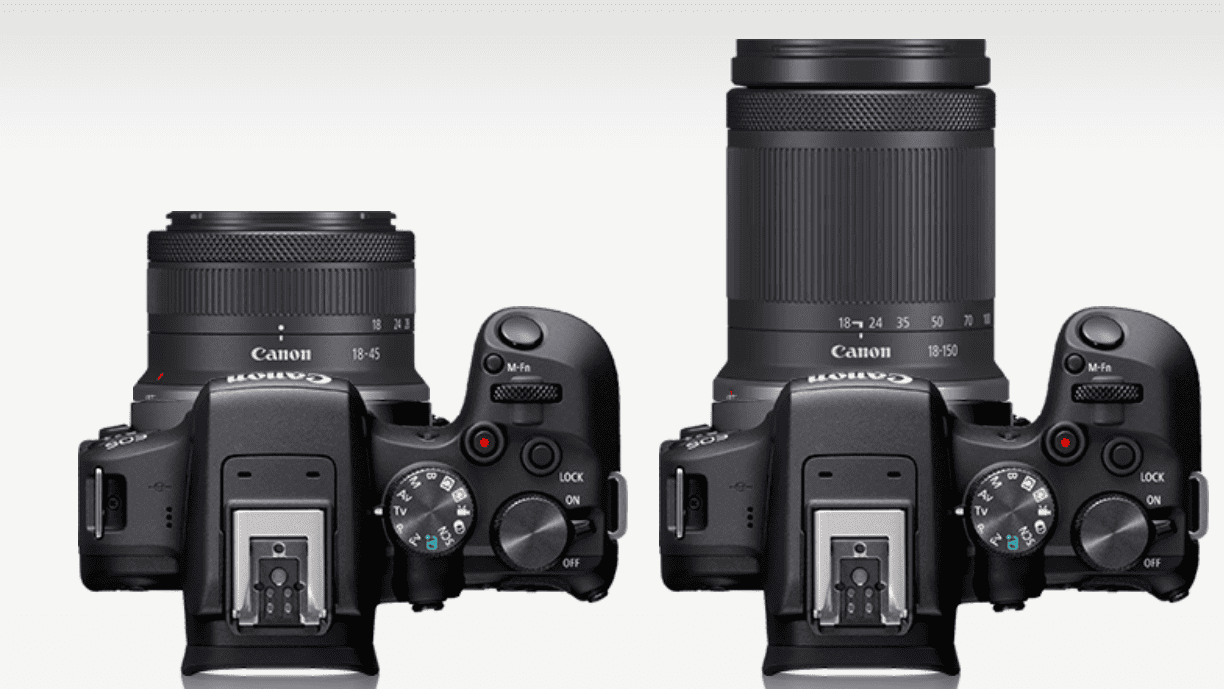
2. Portraits, Food, and Still Life
- Canon RF 50mm F1.8 STM
This is Canon's most affordable RF prime lens, offering great value for money. With a wide F1.8 aperture, it delivers excellent background blur, helping your subject stand out.
Its full-frame equivalent focal length is 80mm, which falls within the ideal range for portraits. It also works well for food and still-life photography.
However, keep in mind that 80mm is in the medium telephoto range, so its narrower field of view is better suited for medium shots or close-ups. For full-body portraits or environmental portraits, you'll need to step back significantly, which may be challenging in tight indoor spaces.
If you prefer a wider angle, consider alternatives like the Canon RF 35mm F1.8, RF 24mm F1.8 (higher price), or RF 28mm F2.8 (smaller aperture).
3. Concerts, Wildlife, and Sports
- Canon RF-S 55-210mm F5-7.1 IS STM
This is Canon's only RF-S telephoto lens, with a full-frame equivalent focal range of 88-336mm. It's a great choice for telephoto shooting and comes at an affordable price.
It's perfect for concerts, sports events, outdoor wildlife photography, and any situation where you need to capture subjects from a distance.
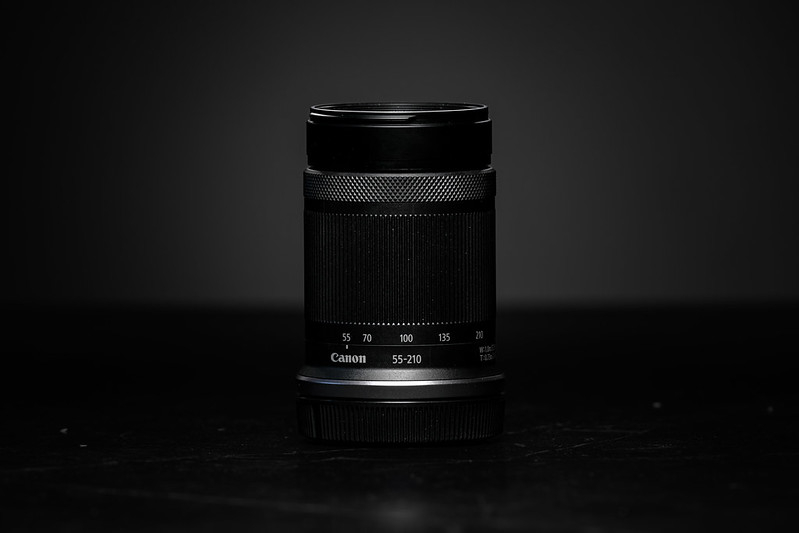
Recommended RF Lenses for Full-Frame Mirrorless Cameras
In this section, we'll highlight some of the best RF lenses for Canon's full-frame mirrorless cameras.
Just because a lens isn't mentioned doesn't mean it's not good — it simply means we believe these recommendations might be the better options for most users.
1. Everyday Photography
- Canon RF 24-50mm F4.5-6.3 IS STM
This is Canon's most affordable RF zoom lens for full-frame cameras. Its main strengths are its low price, compact size, and lightweight design. Canon often pairs it with the R8 to create a budget-friendly full-frame kit.
Due to its entry-level positioning, the build quality and image performance are decent but not exceptional, and its focal range is somewhat limited. We recommend this lens for full-frame beginners on a tight budget.
- Canon RF 24-70mm F2.8 L IS USM
This is one of the standout lenses in Canon's RF lineup. It offers exceptional image quality, premium build, a bright f/2.8 aperture, image stabilization, and a classic, versatile focal range.
If there's anything to complain about, it would be its hefty price and weight. This lens is ideal for professional photographers or serious enthusiasts with a generous budget who want to invest in a versatile, high-quality lens.

2. Travel and Outdoor Photography
- Canon RF 24-240mm F4-6.3 IS USM
This lens offers a versatile 10x zoom range, covering everything from wide-angle to telephoto. It's great for various shooting scenarios, and the image quality is solid. The maximum aperture is reasonable for such a broad focal range.
This lens is perfect for hobbyists who want to capture a bit of everything without swapping lenses, and it's especially ideal for frequent travelers. When you're on a trip, you'll likely encounter all kinds of subjects, making a high-zoom lens like this extremely handy.
- Canon RF 24-105mm F4-7.1 IS STM
This lens comes at a much lower price point and is available both as a standalone option and as part of some kits. Compared to the 24-240mm, it has a smaller aperture, more modest image quality, and reduced telephoto capabilities. However, it's lightweight, compact, and budget-friendly.
It's a great choice for those on a tight budget who still want a solid lens for travel. It's also ideal for hobbyists who enjoy traveling light and prioritizing convenience over advanced features.
- Canon RF 24-105mm F4 L IS USM
This is another 24-105mm lens, but it's nearly twice the price and weight of the STM version. However, it features a constant f/4 aperture and excellent image quality, earning it the red-ring "L" designation for Canon's premium lenses.
To differentiate these two lenses, the first is commonly referred to as the "24-105 STM," while this one is called the "24-105 USM." (STM and USM refer to different autofocus motors, but that's not the primary difference between the lenses, so beginners don't need to worry about it.)
The 24-105 USM is better suited for users who have a larger budget and prioritize image quality.
Compared to the 24-240mm, the 24-105 USM is priced similarly and isn't significantly smaller. However, it offers better image quality and a constant f/4 aperture, though it sacrifices telephoto reach.
Whether this trade-off is worth it depends on your specific needs. Keep in mind that the 24-105 USM is rarely sold separately. It's usually part of a kit. So, you'll need to decide when purchasing the camera body.
Here's a size comparison of the three lenses mentioned above (from left to right: 24-240mm, 24-105mm STM, 24-105mm USM).
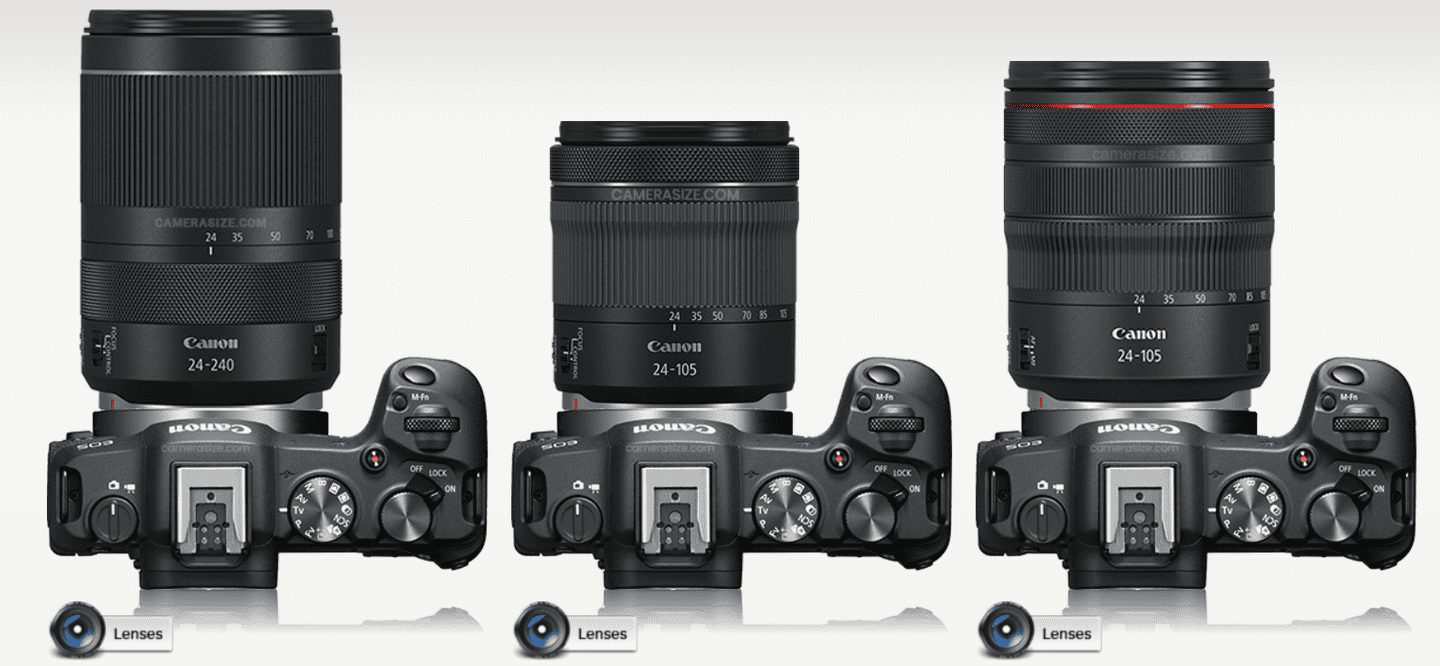
3. Portraits, Food, and Still Life Photography
- Canon RF 50mm F1.8 STM
We've already mentioned this lens in the APS-C section, but it’s even more worth recommending for full-frame cameras. Its biggest strengths are its low price, compact size, lightweight build, and decent image quality.
On full-frame cameras, the 50mm focal length shines because it matches the natural perspective of the human eye — no need for crop factor calculations. It's a versatile standard focal length that works for portraits, food photography, street scenes, product shots, and pets.
We highly recommend this lens for beginners and anyone on a tight budget.
- Canon RF 85mm F2 MACRO IS STM
This might be the best-value portrait lens in the RF lineup.
First, 85mm is a classic focal length for portraits. Compared to 50mm, it offers a narrower field of view, which helps isolate your subject against a clean background (though keep in mind that this narrower view isn't ideal for environmental portraits or shooting in tight indoor spaces).
Second, with an F2 aperture, this lens delivers a shallower depth of field than the RF 50mm F1.8, giving you an even smoother background blur.
It also has a macro function, making it great for shooting small objects like food, jewelry, and other close-up subjects.
- Other Recommendations
If you're looking for the absolute best image quality, Canon offers the RF 50mm F1.2 L USM and RF 85mm F1.2 L USM. These are two of Canon's finest lenses, boasting incredible optical performance, but they come with a hefty price tag.
For a wider field of view, consider the RF 24mm F1.8 MACRO IS STM or RF 35mm F1.8 MACRO IS STM. These lenses are better suited for environmental portraits and documentary-style photography. Both also include macro capabilities, making them versatile for close-up work.
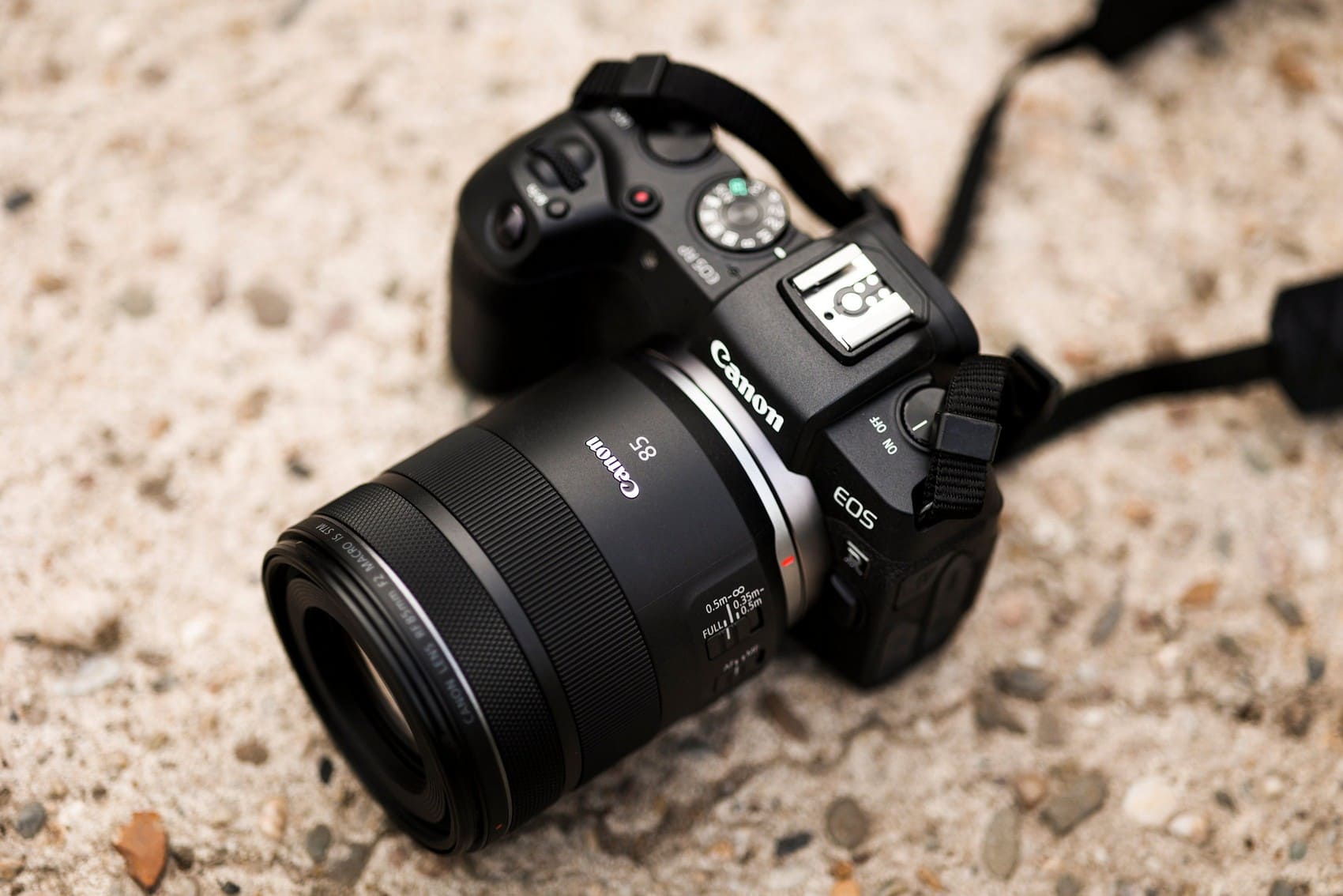
Conclusion
Canon's mirrorless lens lineup is still somewhat limited, but each lens is well-designed to meet different budgets and shooting needs.
In 2024, Canon unofficially lifted restrictions on RF lenses, opening the RF system to third-party manufacturers.
This marks a new era for the mirrorless market, where manufacturers are moving away from closed ecosystems and focusing on fair competition through camera performance and product features.
That said, most third-party RF lenses currently focus on the RF-S lineup, as Canon has not yet authorized full-frame RF lens production. Still, the introduction of third-party options expands choices for consumers and helps meet a wider range of needs.
While we haven't covered third-party lenses in this article, we'll keep updating as more RF-compatible options become available. If you found this guide helpful, stay tuned for more updates!
Product Recommendation
Finally, we'd like to recommend a game-changing tool for boosting your photo editing workflow: TourBox.

Designed specifically for creators, TourBox features intuitive knobs, wheels, and buttons that make editing easier than ever. It's fully compatible with popular software like Lightroom, Photoshop, and Capture One.
Whether you're adjusting exposure, refining details, or switching tools, TourBox simplifies complex tasks with just a twist or a click.

If you're looking for a faster, smoother editing experience, give TourBox a try! Check out our photo editing page to learn more about how TourBox can elevate your post-production process.